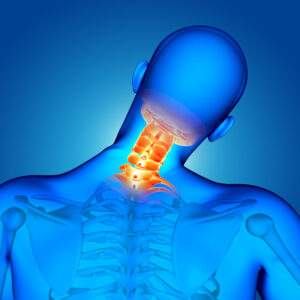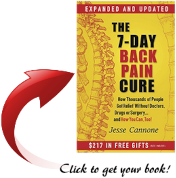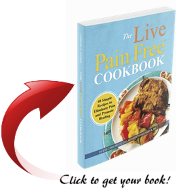Inflammation and pain are closely connected in our body’s healing process. When we get injured or infected, our immune system releases substances called inflammatory mediators. These mediators communicate through signaling pathways, like roads in our body, to manage the immune response. However, if inflammation becomes chronic or excessive, it can contribute to pain and make it difficult to manage. And before we continue, I want to be clear that I am not a medical professional, and what follows is not medical advice. I find this content very interesting as it relates to pain management, and I hope it piques your interest, too.

Image by kjpargeter on Freepik
Inflammatory mediators act as messengers to gather immune cells at the site of injury or infection. They also contribute to the development of inflammation, which is a key factor in pain.
Here three inflammatory mediators:
- Cytokines are tiny proteins made by different cells in our body, especially the ones that help our immune system. They work like messengers, talking to different cells in the immune system and telling them what to do. Cytokines are important because they help control inflammation (when our body gets red and swollen), activate immune cells (the ones that fight off germs), and overall, they help our immune system work properly. They are really important for keeping us healthy and fighting off infections, injuries, and diseases.
- Chemokines are a special kind of cytokines that help immune cells find their way to places where there’s an injury or infection. Think of them as signs that tell immune cells where to go. Chemokines work by attracting and bringing immune cells from our bloodstream to the area that needs help. They create a path that immune cells can follow to get to the spot where there’s swelling. Once the immune cells reach that spot, they can do their important jobs like fighting off germs or helping the body heal.
- Prostaglandins are special substances that act like hormones and come from fatty acids. They are made by different cells in our body, including immune cells, and they do many important things. One of their jobs is to make us feel pain and get a fever. They also help with inflammation, which is when our body gets red and swollen. Prostaglandins do this by making blood vessels wider, so more blood can flow through. They also make the walls of blood vessels allow substances to pass through more easily. All of these actions help immune cells get to the place where there’s an infection or injury faster.
When there’s excessive inflammation in a certain area of our body, it can have an effect on the nerve endings present there. Nerve endings are like tiny sensors that help us feel things, including pain. Inflammation can sensitize these nerve endings, which means they become more sensitive or responsive to pain signals.
Imagine the nerve endings as being on high alert when there is a lot of inflammation. Even a slight touch or movement in the affected area can send stronger pain signals to our brain than usual. It is like the volume of pain signals is turned up, and the area becomes more sensitive to pain.
This increased sensitivity to pain can make the affected area feel more painful and uncomfortable. It is the body’s way of warning us that something is wrong and needs attention. By paying attention to this heightened sensitivity, we can take steps to reduce the inflammation and alleviate the pain.
Pain management strategies aim to reduce the production and release of inflammatory mediators by targeting the signaling pathways involved. Nonsteroidal anti-inflammatory drugs (NSAIDs) like aspirin and ibuprofen inhibit certain pathways, reducing pain and inflammation. However, these drugs come with risks and should be used responsibly.
Corticosteroids are potent medications that suppress the immune system and reduce the production of inflammatory mediators. They provide relief in cases of severe inflammation and pain but should be used under medical supervision due to potential side effects.
Other interventions are being explored to target the signaling pathways involved in pain perception. These include biologic therapies, targeted immunosuppressants, monoclonal antibodies, and dietary interventions. These approaches aim to reduce inflammation and pain by blocking specific molecules or receptors involved in the inflammatory response.

It is important to note that addressing inflammatory mediators and signaling pathways may not be enough for all types of pain. Chronic pain conditions often involve complex mechanisms beyond inflammation, requiring a combination of different therapies. Consulting with a healthcare professional is crucial to determine the most appropriate pain management strategies for individual cases.
To Your Success & Freedom,
Glenn Shimabukuro



